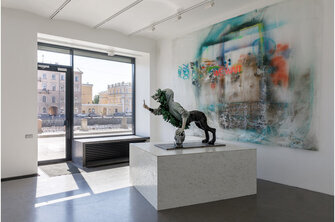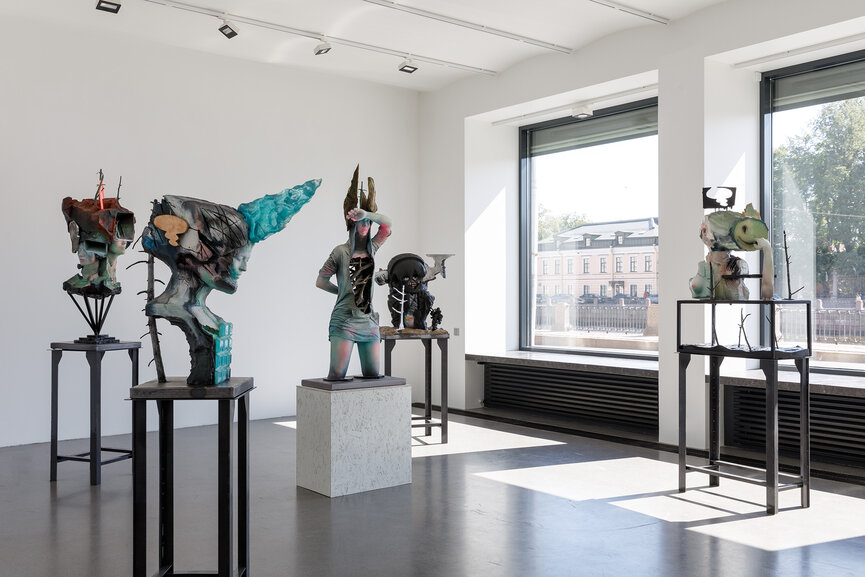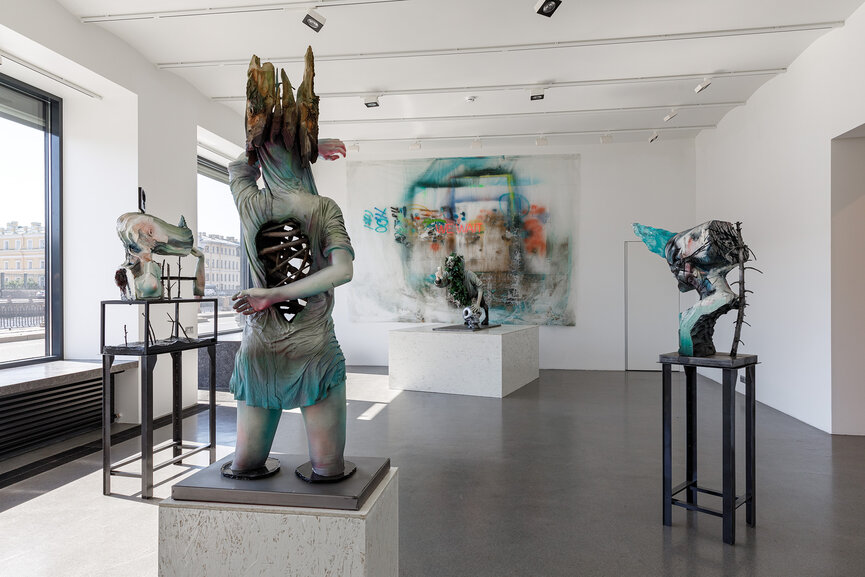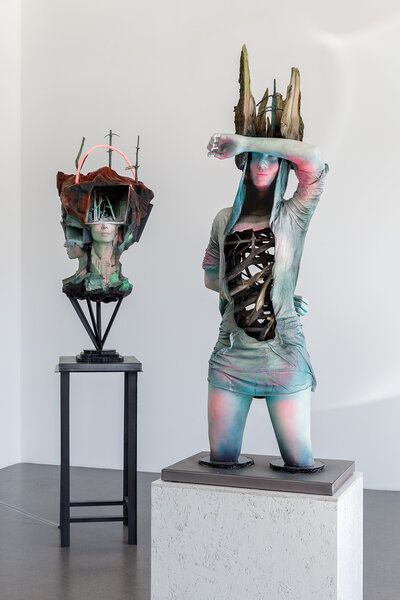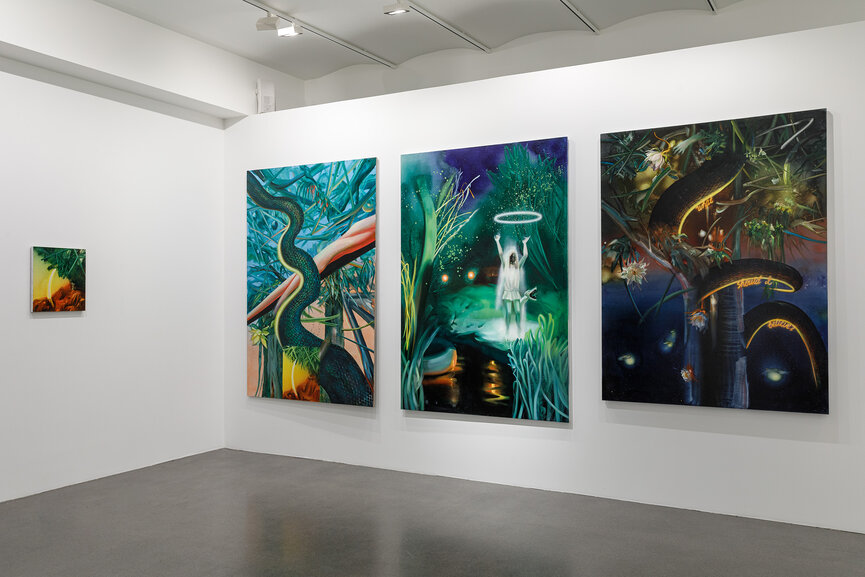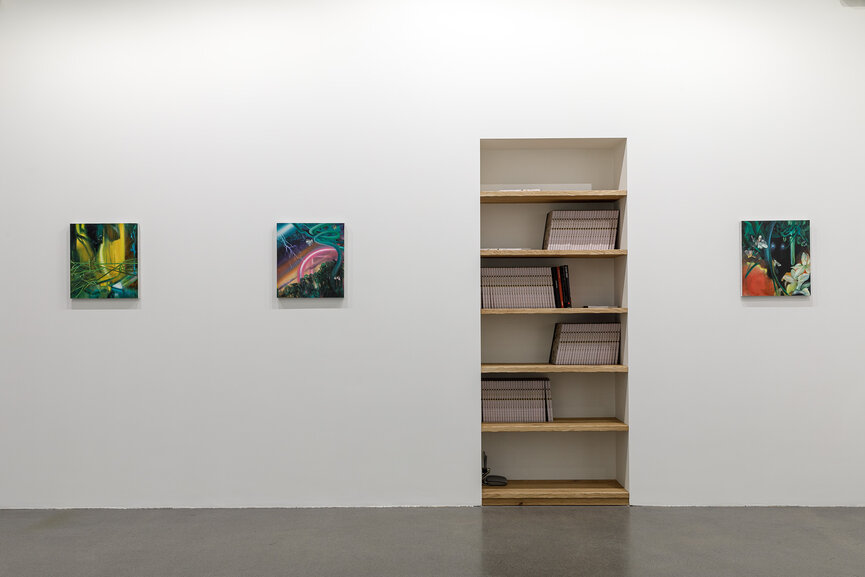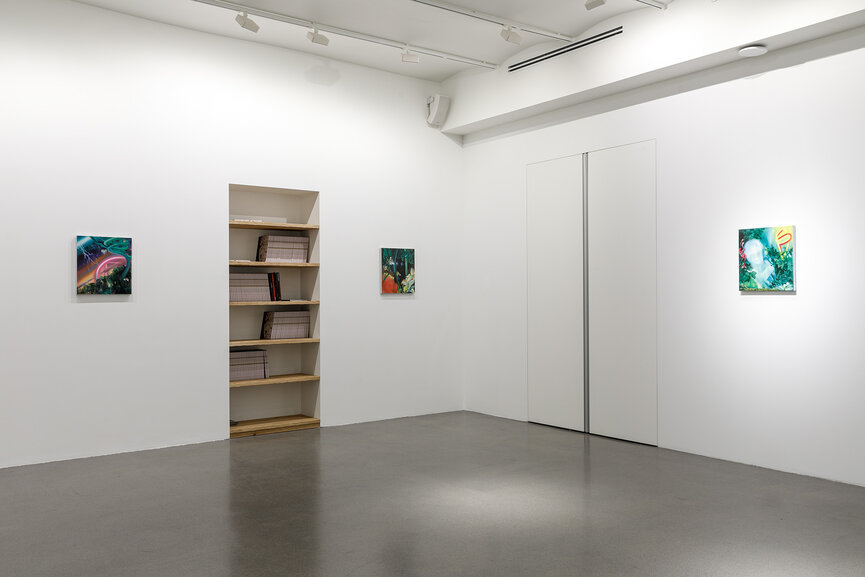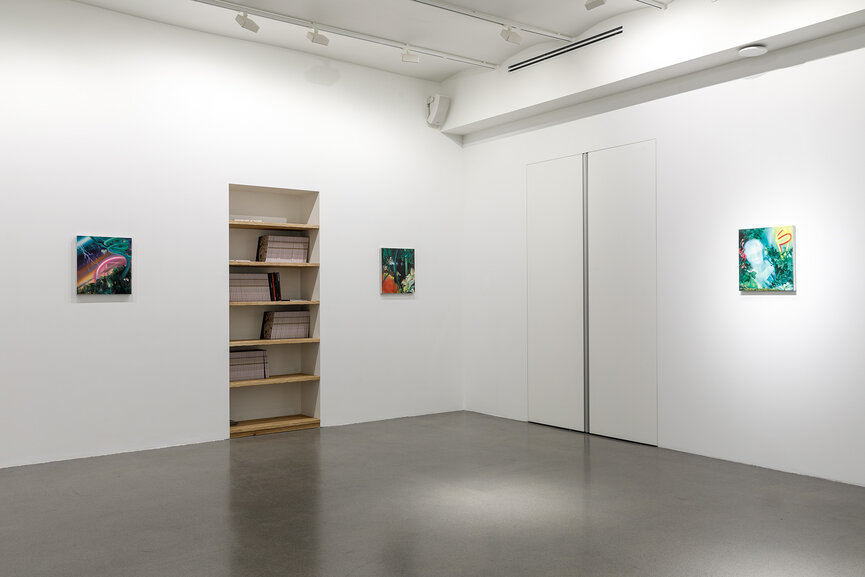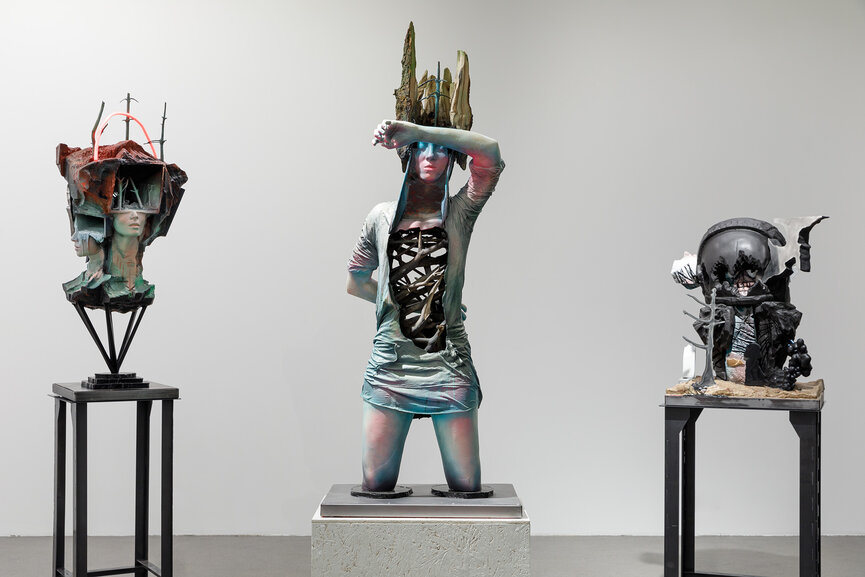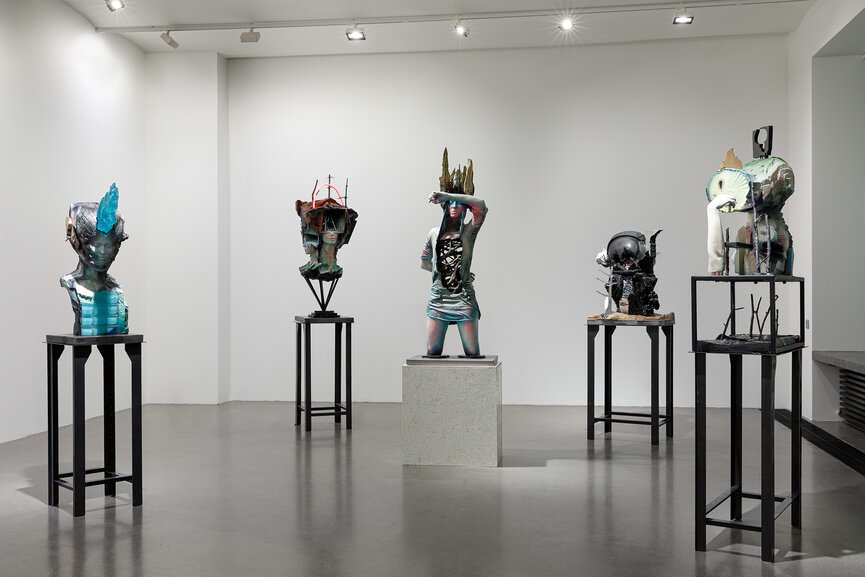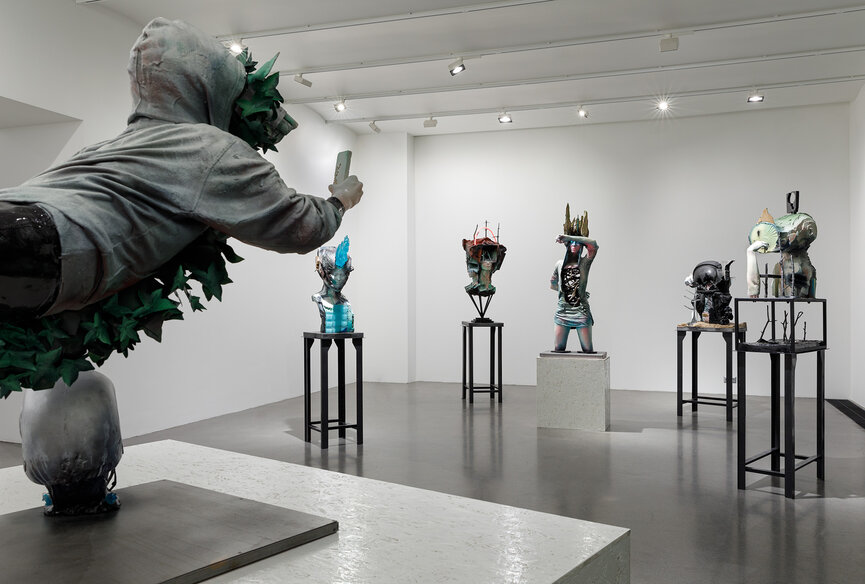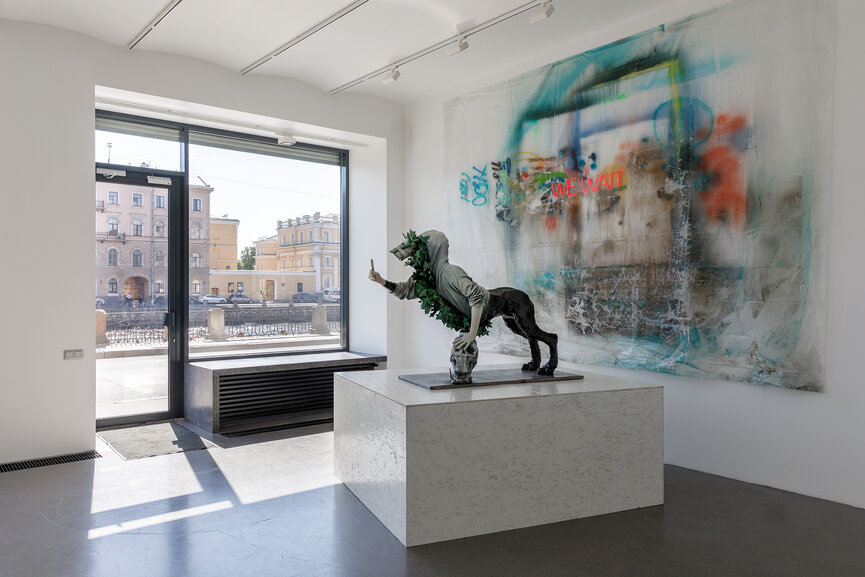Dear friends!
We are happy to announce that we start working with art duo crocodilePOWER from Moscow.
Crocodile Power (Peter Goloschapov [b.1982] and Oxana Simatova [b. 1979]) is a duo of Moscow-based artists working primarily with painting and sculpture using a variety of mixed-media techniques. Addressing the ramifications of technological progress, the artists highlight the physical and psychological transformations that we are undergoing as a result of our interactions with virtuality. Their practice is rooted in an examination of the impalpable sense of uncertainty and loss of self, a reckoning with the erosion of purpose that defines the contemporary human condition in the age of virtuality.
For this solo presentation, the duo created a new series of paintings and mixed-media works as a contemplation of our state of existence within a new system that, despite being of our own creation, we cannot comprehend. This body of work reflects on the use of technology in the proliferation of old myths and superstitions, slowly encroaching on the place of the occult in our collective imaginary – with the witch as a feminist icon and the tech guru as the shaman who leads us into a hypnagogia.
The “dark wood” has been used for centuries to represent a place of mystery and danger. In old German fairy tales the forest is where the monsters dwell. In some epic poems, the forest is an unintelligible will that acts in the interest of no party, seemingly contradicting the desires of those who wander in or take it for granted. While yet in other literary works, the forest is a stand-in for the sphinx, offering a hero their chance at glory should they prove worthy. Like in Waiting for Godot, in interacting with virtuality we replay the same simulation, without recollection, harboring inextinguishable hope for salvation. Beckett’s Vladimir and Estragon cannot affect anything, they can’t even die. There is nothing to be done but to observe the transformation and attempt to comprehend it.
The three large paintings each seem to represent a portion of an earthly threshold traversed by a snake winding its way up into heaven, its head emerging beside an angel-like being raving in a lush green landscape. Nearby, a ritual is taking place – an exaltation of a new form of life. The hominid vessel has its arm over its visage, dimming the light that would blind it; its torso is filled with branches, its head split to make way for the crown of a tree. Though regal, it seems to weep, mourning its fate. Harbingers surrounding the vessel, busts resembling a grotesque synthesis of the natural and the artificial appear at once ancient and unfamiliar. Perhaps they are the true faces of the new gods.
Humanity has invented the virtual as a form of escape, but also of self-justification. Mythos is not only knowledge, but also purpose. As the real and the virtual disintegrate into one another, the human becomes the raw material. Cyberspace, like the forest, is a consciousness with agency that incessantly asserts itself by consuming our thoughts and desires. The will of Oberon is acted out by the cyberacolytes in the guise of corporate CEOs with virtual-only interfaces, who have transfixed us with their digital enchantments. Our collective humanity is confined within our perpetually contracting attention spans while technological progress accelerates the metamorphoses.
You know you are alive because you see and hear, even though your senses are stimulated into a stupor. The selfie-taking sphinx might offer salvation, if you can get its attention.
Text: Anton Svyatsky
